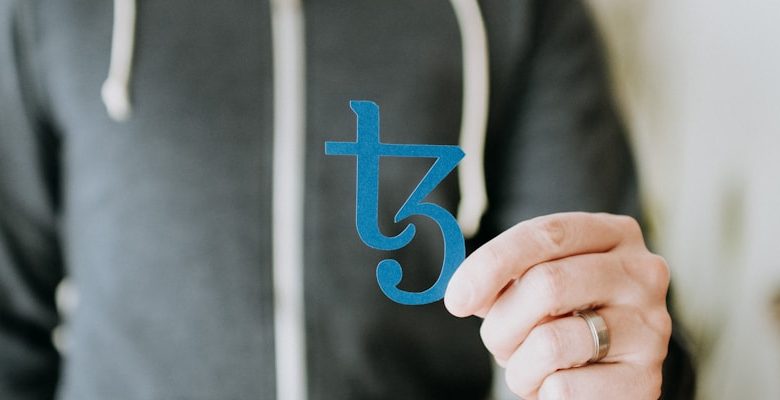Securing a Blockchain Network: Challenges and Solutions

- Understanding the Threat Landscape of Blockchain Networks
- Common Vulnerabilities in Blockchain Networks and How to Address Them
- The Importance of Consensus Mechanisms in Securing a Blockchain Network
- Exploring Encryption Techniques for Enhanced Blockchain Security
- Regulatory Challenges and Compliance Issues in Blockchain Security
- Case Studies: Successful Strategies for Securing Blockchain Networks
Understanding the Threat Landscape of Blockchain Networks
The threat landscape of blockchain networks is constantly evolving, presenting unique challenges for securing these decentralized systems. One of the key issues with blockchain networks is the risk of **cyber attacks**. Hackers are always looking for vulnerabilities to exploit, whether through **malware** attacks, **phishing** schemes, or **DDoS** attacks.
Another concern is the potential for insider threats, where individuals with access to the network may abuse their privileges for personal gain or malicious intent. Moreover, the immutability of blockchain technology can make it difficult to rectify any unauthorized changes or breaches once they occur.
Additionally, the growing popularity of blockchain networks has attracted the attention of **regulators** and **compliance** authorities, leading to increased scrutiny and the need for strict adherence to security protocols. Failure to comply with regulatory requirements can result in severe penalties and reputational damage for organizations operating blockchain networks.
To address these challenges, organizations must implement robust **security measures** such as **encryption**, **multifactor authentication**, and **regular audits** to monitor and detect any suspicious activity on the network. **Training** and **awareness** programs for employees can also help mitigate the risk of insider threats and ensure compliance with security best practices.
In conclusion, understanding the threat landscape of blockchain networks is essential for implementing effective security measures to protect against cyber attacks, insider threats, and regulatory scrutiny. By staying vigilant and proactive in addressing these challenges, organizations can safeguard their blockchain networks and maintain the integrity and trust of their stakeholders.
Common Vulnerabilities in Blockchain Networks and How to Address Them
Blockchain networks are not immune to vulnerabilities, and it is crucial to address them to ensure the security of the network. Some common vulnerabilities in blockchain networks include:
– Smart contract vulnerabilities: Smart contracts are susceptible to bugs and coding errors that can be exploited by malicious actors. It is essential to conduct thorough code reviews and testing to identify and fix any vulnerabilities in smart contracts.
– 51% attacks: A 51% attack occurs when a single entity controls more than half of the network’s mining power, allowing them to manipulate transactions. Implementing mechanisms to prevent or mitigate 51% attacks, such as proof-of-stake consensus algorithms, can help enhance network security.
– Sybil attacks: Sybil attacks involve creating multiple fake identities to gain control over a significant portion of the network. Employing identity verification mechanisms and reputation systems can help mitigate the risk of Sybil attacks.
– Double-spending: Double-spending is a common vulnerability in blockchain networks where a user spends the same digital asset twice. Implementing consensus mechanisms like proof-of-work can prevent double-spending attacks and ensure the integrity of transactions.
To address these vulnerabilities and enhance the security of blockchain networks, it is essential to implement robust security measures, conduct regular security audits, and stay informed about the latest security threats and best practices in the blockchain industry. By proactively addressing vulnerabilities and staying vigilant against potential security risks, blockchain networks can maintain their integrity and trustworthiness.
The Importance of Consensus Mechanisms in Securing a Blockchain Network
Consensus mechanisms play a crucial role in ensuring the security and integrity of a blockchain network. These mechanisms are designed to achieve an agreement among network participants on the validity of transactions and the order in which they are added to the blockchain. By establishing a consensus, blockchain networks can prevent double-spending, ensure immutability, and maintain trust among users.
There are several types of consensus mechanisms used in blockchain networks, each with its own strengths and weaknesses. Some of the most common mechanisms include Proof of Work (PoW), Proof of Stake (PoS), Delegated Proof of Stake (DPoS), and Practical Byzantine Fault Tolerance (PBFT). Each of these mechanisms has its own way of determining which participant gets to add the next block to the blockchain, based on factors such as computational power, stake in the network, or voting power.
One of the key challenges in securing a blockchain network is choosing the right consensus mechanism that balances security, scalability, and decentralization. While PoW is known for its robust security, it is also energy-intensive and slow. On the other hand, PoS is more energy-efficient but may be susceptible to centralization if a few participants hold a majority of the stake. DPoS aims to address this issue by allowing users to vote for delegates to validate blocks on their behalf.
Regardless of the consensus mechanism used, it is essential for blockchain networks to regularly update and improve their protocols to stay ahead of potential security threats. By continuously monitoring and evaluating the performance of their consensus mechanisms, blockchain networks can enhance their security and ensure the trust and confidence of their users.
Exploring Encryption Techniques for Enhanced Blockchain Security
Exploring various encryption techniques is crucial for enhancing the security of a blockchain network. By implementing robust encryption methods, blockchain systems can better protect sensitive data and transactions from unauthorized access and tampering.
One effective encryption technique commonly used in blockchain networks is cryptographic hashing. This method involves converting data into a fixed-size string of characters, making it challenging for hackers to decipher the original information. Cryptographic hashing helps ensure data integrity and authenticity within the blockchain.
Another encryption technique worth considering is asymmetric encryption. This approach utilizes public and private keys to encrypt and decrypt information, adding an extra layer of security to blockchain transactions. Asymmetric encryption helps verify the identities of participants and protect data from malicious actors.
Additionally, symmetric encryption can be employed to safeguard communication between nodes in a blockchain network. This method uses a single key to encrypt and decrypt data, streamlining the encryption process while maintaining a high level of security. Symmetric encryption is often utilized for securing data at rest or in transit.
Overall, leveraging encryption techniques such as cryptographic hashing, asymmetric encryption, and symmetric encryption can significantly enhance the security of a blockchain network. By implementing these methods effectively, blockchain systems can mitigate security risks and build trust among users and stakeholders.
Regulatory Challenges and Compliance Issues in Blockchain Security
When it comes to securing a blockchain network, regulatory challenges and compliance issues play a significant role in ensuring the overall security of the system. Blockchain technology operates in a decentralized and transparent manner, which can sometimes conflict with existing regulatory frameworks.
One of the main regulatory challenges in blockchain security is the lack of standardized regulations across different jurisdictions. This can create uncertainty for businesses and organizations operating in multiple countries, as they struggle to comply with varying regulatory requirements.
Another compliance issue in blockchain security is the anonymous nature of transactions, which can make it difficult to trace and verify the identities of parties involved. This can pose a risk for illegal activities such as money laundering and terrorism financing, leading to increased scrutiny from regulatory authorities.
To address these regulatory challenges and compliance issues, it is essential for businesses to work closely with regulators and policymakers to develop clear guidelines and frameworks for blockchain security. This collaboration can help ensure that the technology is used responsibly and in accordance with existing laws and regulations.
Case Studies: Successful Strategies for Securing Blockchain Networks
Successful strategies for securing blockchain networks can vary depending on the specific needs and requirements of the network in question. However, there are some common approaches that have proven to be effective in enhancing security and protecting against potential threats.
- Implementing robust encryption protocols is essential for safeguarding data on the blockchain. By encrypting data at rest and in transit, sensitive information is protected from unauthorized access.
- Utilizing multi-factor authentication can add an extra layer of security to the network, requiring users to provide multiple forms of verification before gaining access.
- Regularly auditing the network for vulnerabilities and weaknesses can help identify and address potential security gaps before they are exploited by malicious actors.
- Implementing access controls and permissions can limit the amount of information that each user has access to, reducing the risk of insider threats.
Additionally, establishing a robust incident response plan can help the network respond quickly and effectively in the event of a security breach. By having clear protocols in place, the impact of a breach can be minimized, and the network can recover more swiftly.



